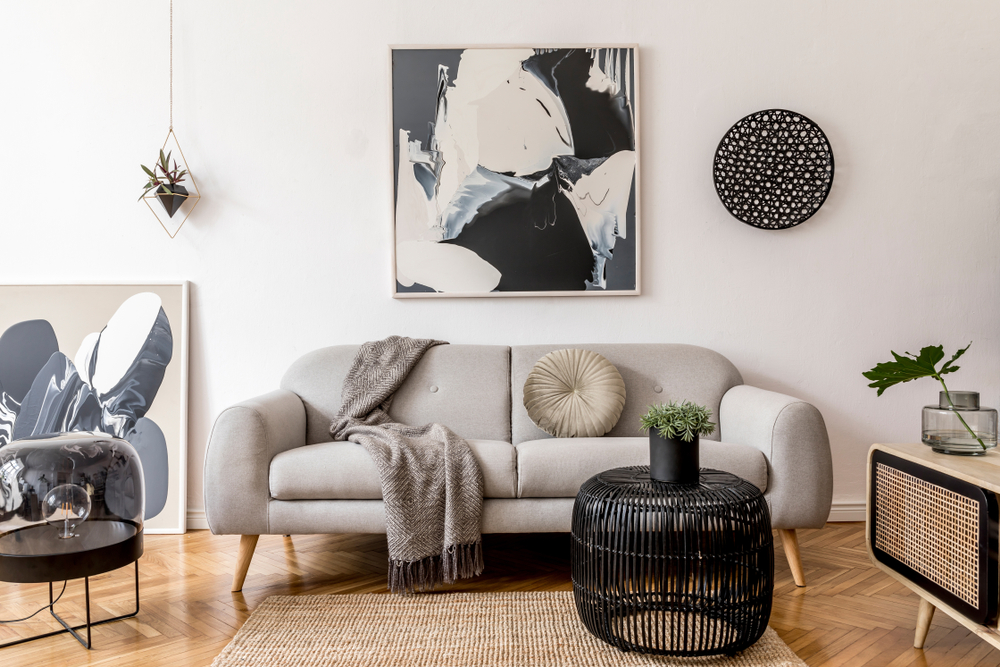If you’ve only recently begun considering decorating your home, and your living room is first on your list, you may feel overwhelmed.
There is a lot to consider such as wall paint colors, the type of furniture you already have, and furniture you may need. You can also analyze how to arrange and accessorize it.
However, the first thing to determine about yourself is your decorating style.
This is made more accessible by looking at pictures of living rooms. Knowing this will help you make decisions about furniture, paint colors, window coverings, floor coverings, and accessories along the way.
So take a look at these pointers for getting started with your decor style in mind.
Know Your Measurements
Before you write down all of your living room design ideas, you must measure. If you don’t measure every nook and cranny, your entire living room design could be inaccurate or won’t work in the space.
You should include window treatments, furniture, and rugs.
Walls with windows, doors, or insets should be given special attention because they will restrict the room’s layout. Take the sketch with you when you go shopping. It will help you avoid having an accident or ordering furniture that is the wrong size.
Picture the Layout
You don’t need to be an interior designer or an architect to plan your living room layout. Doing so will help you determine what type of furniture to buy and where to place it.
It can help you figure out if your new bar cabinet or long sectional sofa will fit in your space. But, at the same time, it might make you realize that you won’t be able to fit in that extra cabinet.
Consider your layout or floor plan as a starting point for envisioning what your living space will look like. After that, make a list of the essential items you’ll need in the room and prioritize their placement.
Are you having trouble coming up with a design? Floor planner software is readily available, which can make an ideal living room layout for you.
Furniture
People frequently complain about not knowing how to arrange their living room furniture so they push a sofa against one wall, a couple of chairs against another, and call it a day.
Arranging furniture necessitates a little more thought. Choosing a focal point, creating conversation areas, and considering traffic flow are all important considerations.
Artwork

Walls that aren’t painted are a sign of a room that isn’t finished. This doesn’t mean you have to fill every square inch, but the wall art on the walls is essential. It’s necessary, but it doesn’t have to be expensive to achieve a pleasing and consistent appearance.
What one person considers art may be completely different from what another person finds art. When it comes to what you like and what will go in your room, the best thing to do is to trust your instincts.
Get a handle on the fundamentals of what to hang and how to hang it, and then follow your heart.
Lighting
Any room’s lighting is a somewhat complicated element. However, it is less critical in living rooms than in more utilitarian rooms like kitchens.
Most importantly, each of the three main types of lighting should be included: ambient, task, and accent. Throughout the room, light sources should be placed at various levels.
For example, consider recessed lighting, chandeliers, table and floor lamps, and wall sconces.
Color Palette
Choosing the right paint color is crucial when it comes to living room ideas. Choose a color scheme that complements your furniture—the overall aesthetic of your home and the look you want to achieve.
Remember that lighting will play a big part in deciding on the right paint colors. Keep in mind that you can mix and match decor trends and colors.
Don’t be afraid to use various colors, patterns, and styles in your living room. However, to avoid making the space appear overwhelming, make sure there is a common theme. That may include color, style, or subject matter.
Contrast Neutral Colors
On the same note, keep in mind that neutral colors can be contrasted as well. White walls, for example, can be a refreshing contrast to caramel leather accents and brass hardware.
Using contrasting tones gives the palette a more decadent feel and a more striking look as you add more color and texture.
The Bottom Line
There are millions of living room design ideas to choose from. However, the large number of living room trends available can make the design process less enjoyable and overwhelming.

